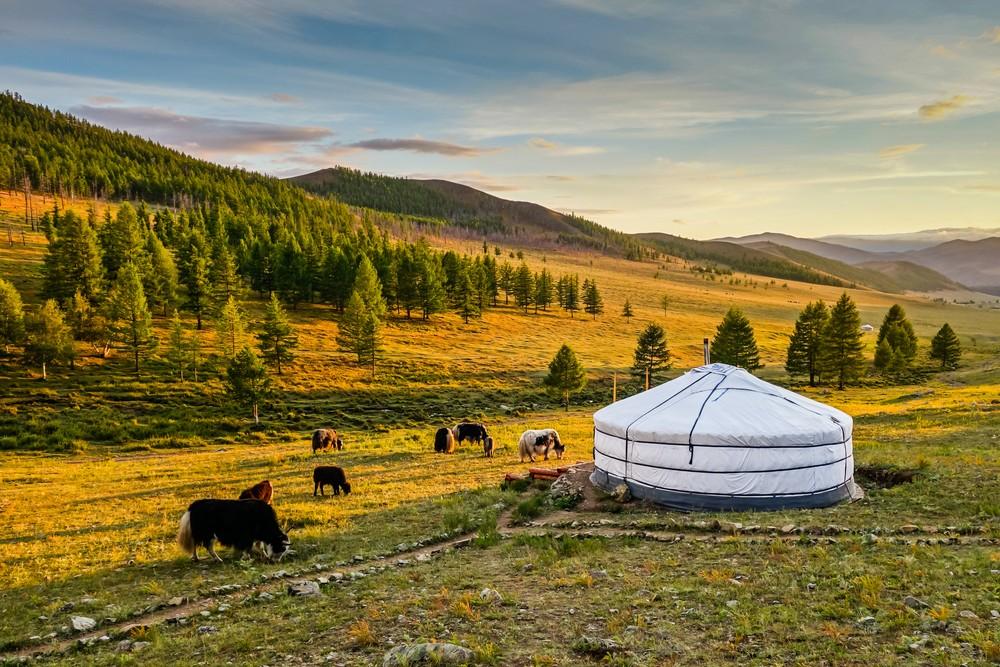The time of caravans is over – also in Mongolia and in the Gobi Desert. The camels, which for centuries were the most loyal companions of the nomadic people in this distant part of Asia, have had their day and made way for high-horsepower jeeps. Of course, there are still the Bactrian animals – around 600,000 specimens are said to live on the yurts of the desert dwellers, but they are almost only shown at the traditional Naadam festival or encouraged to race. Here and there there are even beauty contests for camels, and if you ask the Mongolians how to recognize a beautiful animal, they smile and say: “The camel must be big and stately – like humans…” But some things have been passed down from generation to generation in the Gobi Desert. Their songs and dances, which tell of their love for their homeland, of the loneliness of the steppe and of the eternally blue sky over Mother Earth.
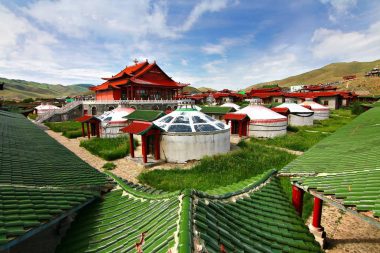
When night falls over the desert and the full splendour of the Milky Way gradually unfolds in the sky, guests from another world also feel the melancholy of this remote region. The people of the Gobi are proud of their perseverance when they were threatened with religious persecution in times of oppression. In the meantime, most of them have returned to their spiritual roots and profess the Tibetan version of Lamaist Buddhism. The ceremonies of the shamans play a major role, especially in northern Mongolia.
The locals claim that the sandy hills of the Gobi Desert “sing” on some days. Geologists also know why this phenomenon occurs: the winds break on the rocks of the Gurwan Saichan National Park and the shifting dunes of Chongoryn Els produce these sounds. Since the times of the legendary Genghis Khan, the people of Mongolia have grown up with their “singing mountains”. Where there are still wild camels in the national park, Siberian ibex and here and there even a few specimens of the shy Gobi bears.
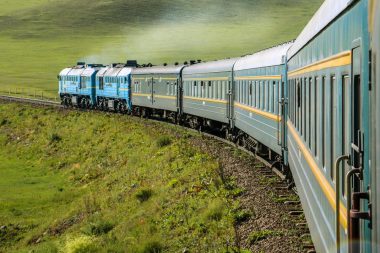
Mongolia has barely more than three million inhabitants – it is one of the most sparsely populated countries on the globe. And because holidaymakers don’t get lost here so often, the nomads of the desert meet them with a great open-mindedness and hospitality. Anyone who is greeted at a yurt is almost always offered a cup of Airag. This is the fermented milk of the mares. You have to like this drink – sometimes it is also combined with dried curd. From time to time, however, milk tea is also served.
Half of all inhabitants of Mongolia are settled in the capital Ulaanbaatar. One of the most famous sights of the metropolis is the Gandan Monastery, whose spiritual leader is the Dalai Lama. A 26-metre-high statue is dedicated to the goddess Janraisig. The imposing Blue Sky Tower, the tallest building in Mongolia, houses a luxurious hotel and a well-known revolutionary is honoured with a monument on the spacious Sukhbaatar Square.
But it is above all the vastness of the desert that characterizes this beautiful country. It is a country without a horizon and with a unique nature. According to the nomads, the sky is the seat of gods and demons. A camp at Gorkhi Terelj National Park provides intensive insights into the everyday life of the people of Mongolia, and those who are lucky enough to be part of a traditional Naadam festival will experience the country’s most skilled athletes archery, wrestling and horse racing. On a tour of this interesting country, the words “Sain Bainuu” will be the constant accompaniment. It simply means “Welcome”. Journeys through Mongolia guarantee variety and surprising impressions even in the monotony of the Gobi Desert.
The most popular sights in Mongolia
Ulaanbaatar – steppe city between tradition and modern times
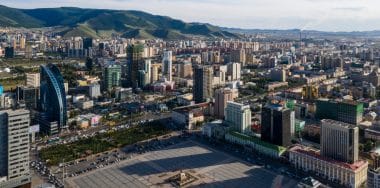
Wide, barren steppes, high rugged mountains, stone and sand deserts. This is the archaic landscape of Mongolia. The nomads who live there with their herds of sheep, goats and yaks are facing upheaval. Jeeps and trucks are now replacing their horses. Livestock breeding and agriculture are losing importance. The contrast between tradition and modern times is particularly evident in the capital Ulaanbaatar. In the city of 3.2 million inhabitants, modern skyscrapers stand next to Soviet palaces, prefabricated buildings next to huts and yurts.
While some have running water and electricity, others live in great poverty. Since the end of the Soviet Union in 1990 and the founding of the state of Mongolia, the city has changed. Tourists are impressed by the monumental Sukhbaatar Square in the center. In addition to magnificent bank and theatre buildings, the town hall and the stock exchange, there is the imposing parliament building, flanked by a large equestrian statue of Genghis Khan. Even more huge is another equestrian statue of Genghis Khan, which is a day trip away from Ulaanbaatar. It is 30 metres high and sits enthroned on a 10-metre-high base with kiosks. With a lift, tourists can ride up to the statue’s horseback. The important Gandan Monastery in Ulaanbaatar is worth seeing. It is the only one that was not closed in the Soviet era. Visitors should also not miss the Mongolian National Museum with its 15,000 exhibits and the palace complex of the Bogd Khan Palace Museum.
Genghis Khan orders the construction of the city of Karakorum
Long gone are the Soviet times, when many Mongolian art treasures were disregarded or destroyed. Karakorum is such a treasure. It is the sunken capital of the ancient Mongol Empire in the valley of the Borchon River, about 350 kilometers west of Ulaanbaatar. It was built in 1220 at the behest of Genghis Khan, but experienced only short periods of prosperity and was already destroyed in the 16th century. But their myth lives on and nourishes the national pride of the Mongols. Today it is a ruined city, an excavation site with a museum. In the Middle Ages, guest workers were brought into the country for the construction of Karakorum – mostly Chinese. They came voluntarily or were forced laborers.
Parisian guest worker forges silver fountain for ruler’s palace
Among them was the blacksmith Guillaume Boucher from Paris. Genghis Khan’s troops had abducted him from Hungary. But Boucher did not live like a slave in Karakorum. He earned a lot of fame because he had forged an elaborate silver fountain in the shape of a tree for the Khan Palace. Various drinks (fermented mare’s milk, wine, rice wine and honey mead) gushed out of four pipes of this beverage fountain, which were fed into four collection containers and refilled again and again. In the new millennium, German archaeologists also support the excavations in Karakoram, which are bringing more and more finds to light. For example, a bronze seal of the Minister of Finance from 1271 and a sophisticated water system built by the Chinese, as well as knives and coins, were found. In kilns, the archaeologists discovered bricks and clay figures.
Buddhist monastery “Erdene Dsuu” is located next to the ruined city
Very close to the ancient Karakoram is the Buddhist monastery “Erdene Dsuu” (“Precious Lord”), which has been revived since 1990 and is also a place of pilgrimage. Date of foundation: 1586. Unfortunately, the monastery was destroyed so often over the centuries that its monks were not allowed to experience a period of rest until the end of the 19th century. At that time, around 1000 monks lived there in 62 temples. For the rebuilding of the monastery, construction workers used stones from the neighboring ruined city of Karakorum each time. In 1937, during the Stalin era, the temple complex was again almost completely wiped out – only four temples remained standing. Fortunately, so is the imposing outer wall of the estate with more than 100 round towers. In addition to the richly decorated temples, three huge, carved stone turtles are a tourist magnet. They are said to come from Karakorum and were once the city’s landmark. In 2004, UNESCO declared the Orkhon Valley, where the monastery and Karakoram are located, a World Heritage Site.
Gobi Desert: Spend the night in a yurt and ride camels
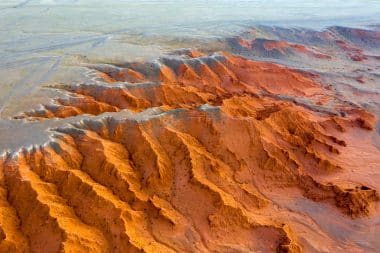
One of Mongolia’s most fascinating landscapes is the Gobi Desert, which covers 2.3 million square kilometers. However, Mongolia shares the unimaginable expanse with China. Sand dunes are rare in the Mongolian Gobi, scree deserts with bare rocks dominate. The wildlife is unique: Of the 5000 snow leopards that still exist worldwide, 700 live in the Mongolian Altai Mountains on the northern edge of the Gobi. The desert temperatures demand a lot from people, flora and fauna: While the maximum temperatures drop to -30 C and -40 C in winter, they rise to up to 35 degrees C in summer. The highlight of a trip to Mongolia is a guided tour through the desert lasting several days. Participants spend the night in yurts with nomadic families who are known for their hospitality. Visitors will then have the opportunity to ride horses and camels and sample local food such as salted butter tea, fermented mare’s milk, homemade cheese, and meat stews. For breakfast there is often fat mutton soup…
With the brown bears in Gorkhi-Terelj National Park
37 kilometers north of Ulaanbaatar is the Gorkhi-Terelj National Park. It is directly connected to the capital by a road. This protected area on the Tuul River is home to brown bears and more than 250 species of birds. While only the southern and smaller part of the park is equipped with restaurants, camps, souvenir shops, horse and camel riding stations, the much larger, northern part of the park is considered hardly accessible. During sightseeing tours, the rangers usually stop at Khagiin Khar Lake, the hot Yestii springs and the Buddhist monastery. Cameras and cell phones are pulled out when the famous rock formations in the shape of a turtle and an old, reading man appear.
Travel information Mongolia
| Capital | Ulaanbaatar |
|---|---|
| Form of government | Parliamentary Republic Parliamentary democracy |
| Currency | Tögrög (MNT) |
| Area | approx. 1,564,116 km² |
| Population | approx. 3,031,330 (2016 est.) |
| Languages | Mongolian |
| Electricity grid | 230 volts, 50 Hz |
| Area code | +976 |
| Time zone | UTC+7 to UTC+8 |


